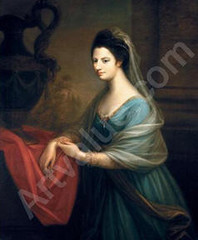
PREV ARTICLE
NEXT ARTICLE
FULL ISSUE
PREV FULL ISSUE
SARAH SOPHIA BANKS AND THE ‘CONTINENTAL DOLLAR' OF 1776George Kolbe writes:
David Fanning submitted this analysis of Eagleton’s article. Thanks! -Editor
A Few Notes on Catherine Eagleton’s Numismatic Chronicle Article on the Continental Dollar
The 2014 volume of the Numismatic Chronicle includes Catherine Eagleton’s article, “Collecting America: Sarah Sophia Banks and the ‘Continental Dollar’ of 1776.” This is a highly interesting article that brings to light a wonderful printed advertisement seeming to offer examples of the 1776-‐dated Continental dollar to a European public and further discusses the impressive collecting efforts of Sarah Sophia Banks. However, while both Banks and the printed advertisement are well worth writing about, Eagleton introduces a few errors into her analysis that lead her to some faulty conclusions. Eagleton’s boldest claim in her article is the suggestion that the Continental dollars were struck in Europe and intended as medals.[1] It is clear from a handwritten catalogue entry made by Jonas Dryander and later copied by Banks that Dryander was of the opinion that the pieces were “never current, struck on speculation in Europe, for sale in America.” Nowhere, however, does Dryander give any indication of why he thought this to be the case, and there is no real reason for us to accept this opinion as evidence of anything more than the existence of an opinion. It is the printed advertisement that is the most fascinating artifact discussed in Eagleton’s article, but her analysis is faulty in a few ways. First, she assumes a connection between the manufacturer of the piece and the person behind the advertisement, despite no such connection being claimed in the ad itself. Second, she clings to the ad’s use of the term “medal” (rather than “coin”) to describe the piece while ignoring the fact that the words were used differently at the time. (For example, John Pinkerton’s ubiquitous Essay on Medals, the main English collector’s guide of the period, is almost entirely about coins.) More serious objections to Eagleton’s argument arise from two factual errors. First, she mistakenly states that the paper money design on which the Continental dollar dies were based is signed by E.G. (generally taken to be Elisha Gallaudet): “if this was meant to be a medal ‘representing’ the paper money, the presence on the Continental dollar of Gallaudet’s design and initials might not indicate any direct connection between him and the cutting of its dies. ... It might equally be a case of the die-‐sinker copying the design from the paper money faithfully in all details, including its errors, and also reproducing the signature of the engraver responsible for the printing plates from which the paper money had been made.” (page 298) In fact, only the metallic dollar is so signed: the paper money is not. This is a fairly serious lapse. A second serious lapse comes in Eagleton’s analysis of the printed advertisement. She clearly writes on page 298 that “the advertisement states that they were minted in Europe.” It does no such thing. There is absolutely nothing said in the advertisement about where the pieces were made. Indeed, the ad describes them as “American Medals,” which if anything implies that they were manufactured in America. The only source stating that the Continental dollars were struck in Europe is Banks (who was quoting Dryander), and this is evidence of nothing other than what they thought to be the case. There are other quibbles one might have with the article, some of them based on the revelations contained in the July 2014 article by Eric P. Newman and Maureen Levine,[2] which found that the dollars had been illustrated as early as 1783 and alluded to in print as early as 1779. But Eagleton’s errors regarding the E.G. signature and the printed advertisement are enough to call into question her conclusions. Indeed, “this example provides a caution against inferring too much from limited sources.” [3] Notes 1. I am referring throughout to the piece as the “Continental dollar” while recognizing that this is simply the generally accepted term and not necessarily its true status. 2. Newman, Eric P., and Maureen Levine. “18th-‐Century Writings on the Continental Currency Dollar Coin,” The Numismatist, Vol. 127, No. 7 (July 2014), pp. 34–57. Given the lengthy lead-‐time of the Numismatic Chronicle’s production, I acknowledge the probability that Eagleton had not seen the Newman &Levine article prior to submitting her article. 3. Eagleton, page 300. To read the complete article, see:
To read the earlier E-Sylum articles on Sarah Sophia Banks, see:
Wayne Homren, Editor The Numismatic Bibliomania Society is a non-profit organization promoting numismatic literature. See our web site at coinbooks.org. To submit items for publication in The E-Sylum, write to the Editor at this address: whomren@gmail.com To subscribe go to: https://my.binhost.com/lists/listinfo/esylum All Rights Reserved. NBS Home Page Contact the NBS webmaster 
|
